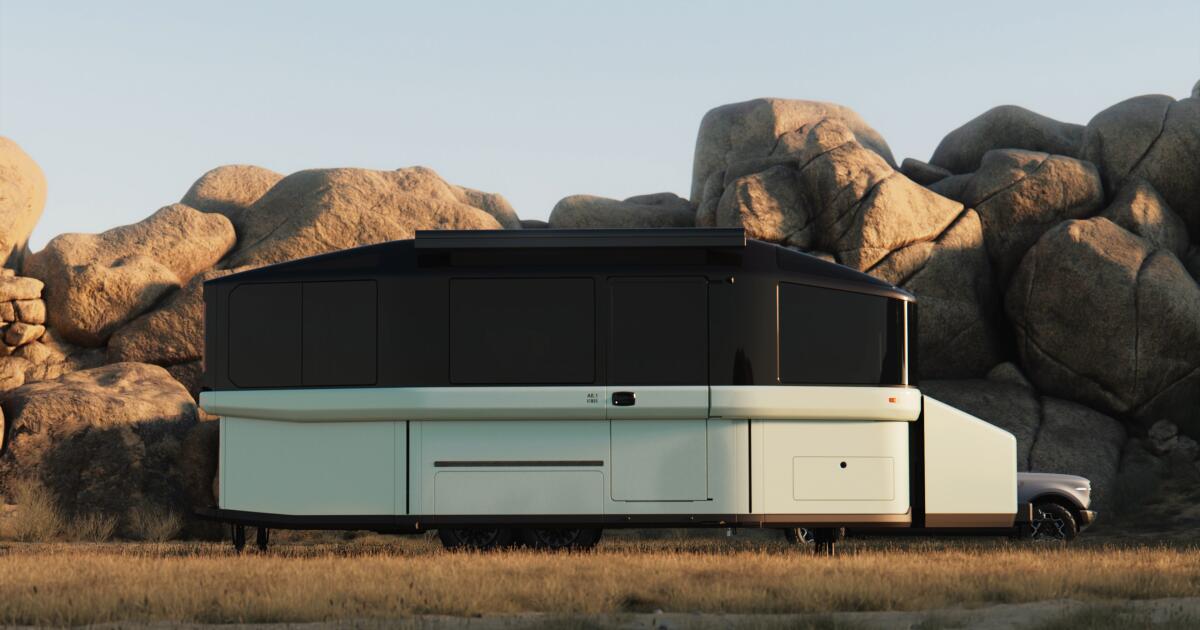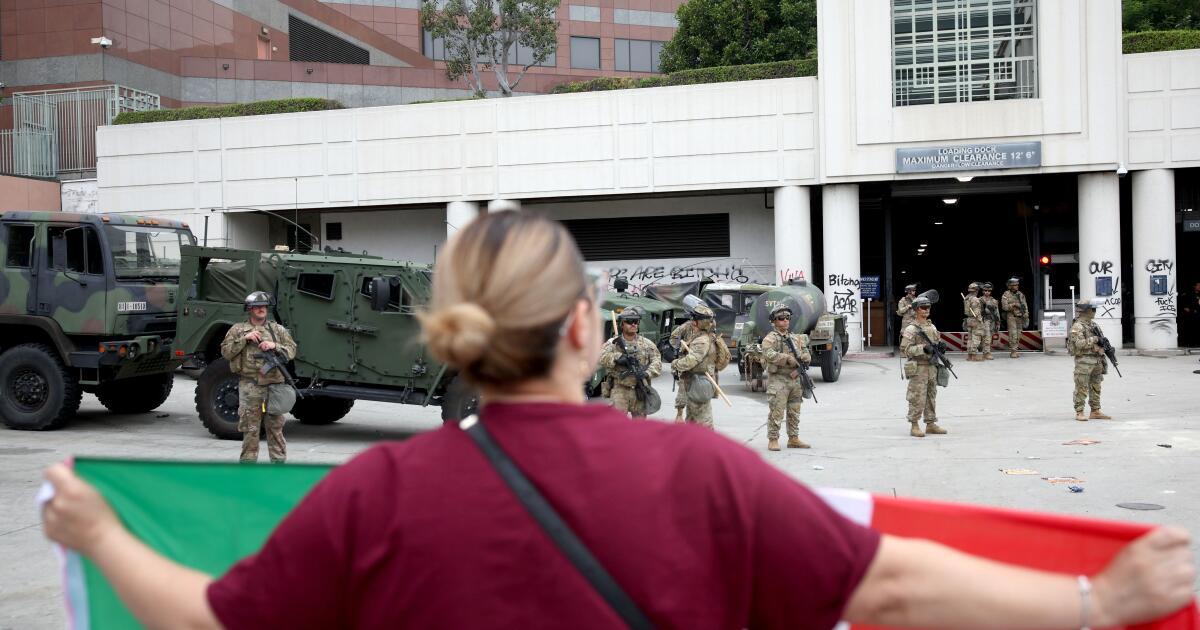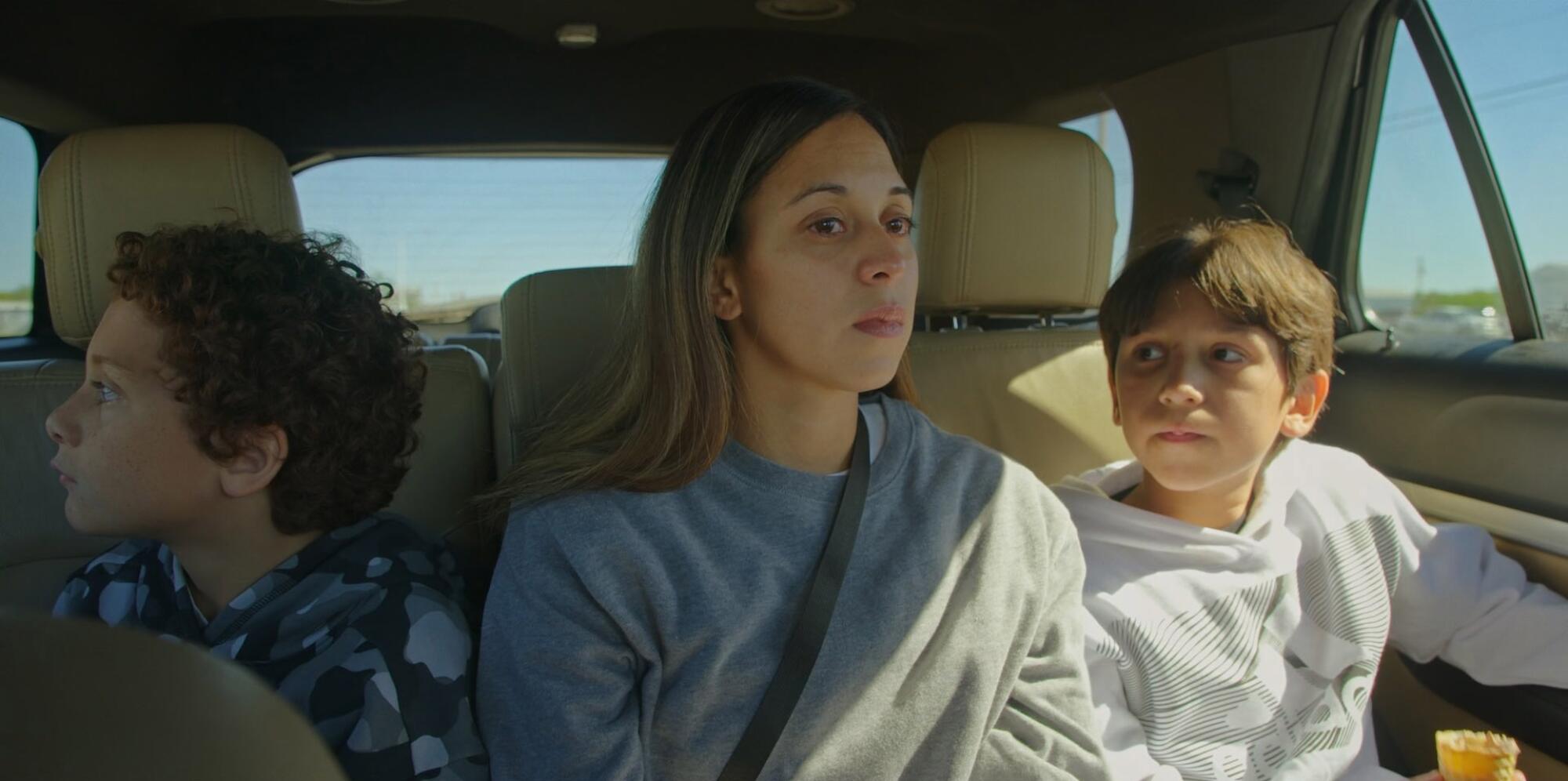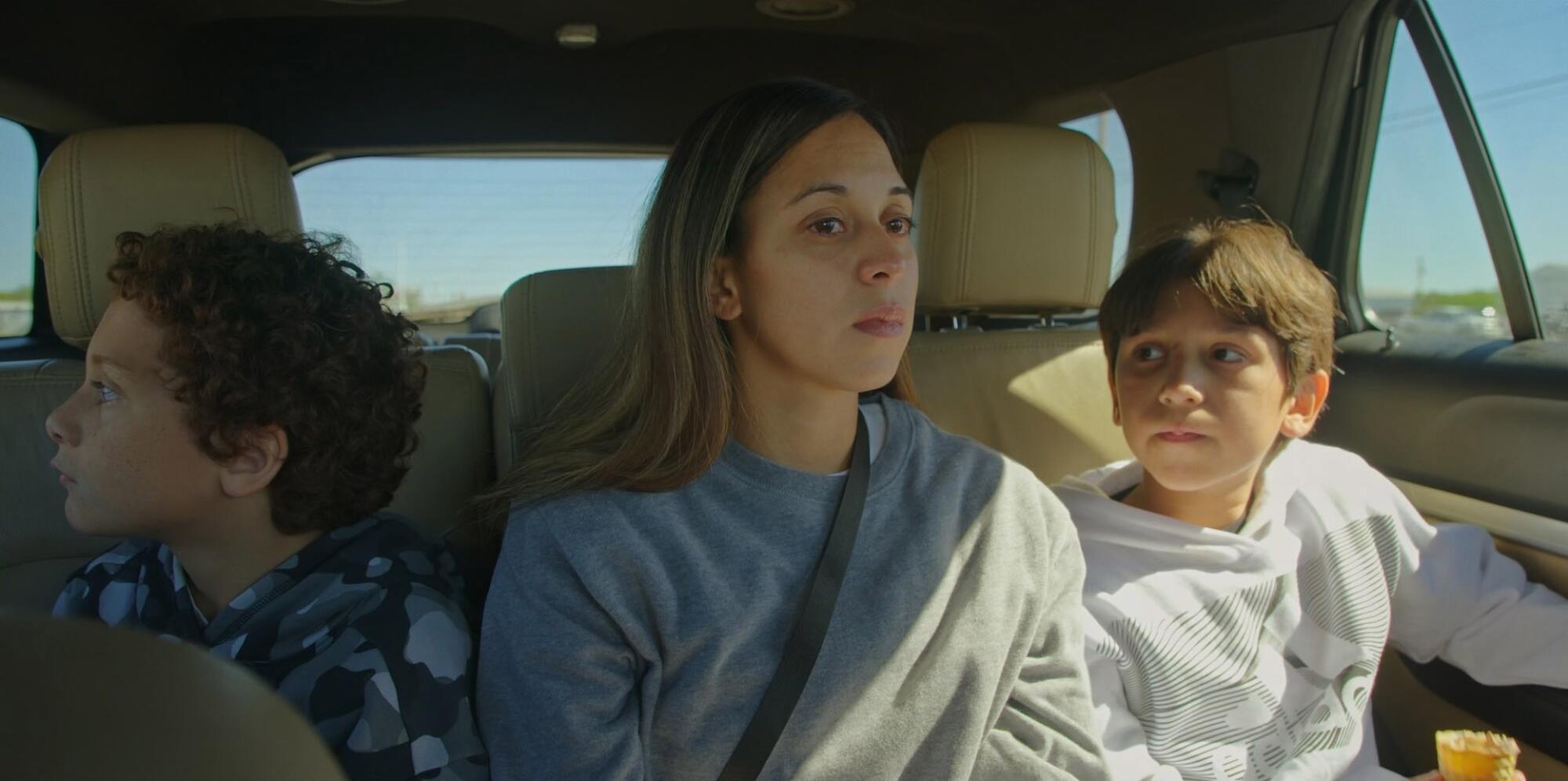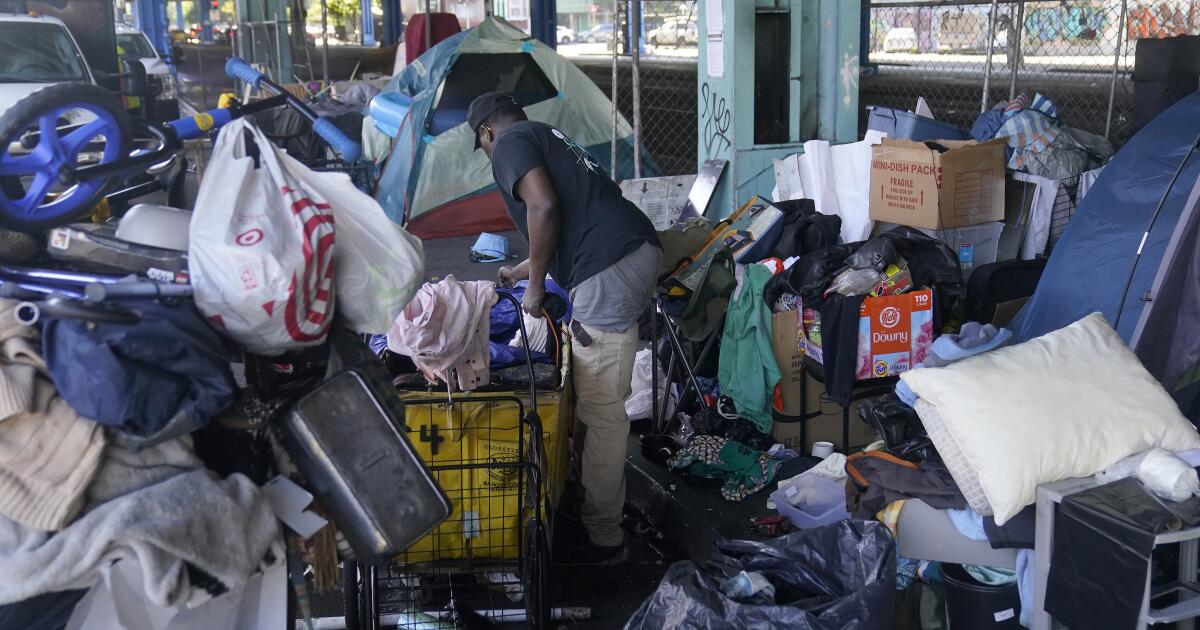Road trips are getting cleaner and quieter as RVs go electric
Bob Anderson — physician, pilot, executive — is nothing if not a perfectionist.
He’s owned his fair share of recreational vehicles and disliked each of them uniquely. There was the Earth Roamer (anemic axles, in his opinion), the $350,000 Newmar land yacht (complex emissions technology) and a 25-foot Airstream trailer (lots of propane). Yet Anderson, 81, keeps buying camping rigs. And he’s hoping the next one will be his last.
This fall, he’ll take delivery of a Lightship AE.1 Cosmos, an RV as similar to an Airstream as a Tesla Roadster is to a Pontiac Firebird.
What separates the Lightship from the rest of Anderson’s letdowns is its propulsion system and design: The rig has two electric motors, so it can drive itself while hitched to the vehicle towing it, and the entire top half tucks down for better aerodynamics while underway. With these two hacks, the vehicle towing the Lightship will feel virtually no weight most of the time. On the interstate, Anderson’s hybrid pickup truck will theoretically get its standard 27 miles per gallon, rather than the 12.5 miles it manages with the Airstream behind it.
“It’s going to change everything in the RV world,” Anderson says.
This year may well be an inflection point for the RV industry, when serious alternatives are emerging to the gas-guzzling rigs chugging between national parks.
In addition to the Lightship, the Pebble Flow — another towable camper with an electric drivetrain — will hit the road. Meanwhile, a host of electric vans will finally be stamped out in high volumes, most notably Volkswagen’s ID. Buzz , the latest iteration of the brand’s storied bus. Even incumbent Thor Inc., which is to RVs what Apple is to smartphones, is putting the final touches on its first hybrid rig.
“It’s certainly a huge milestone,” says McKay Featherstone, head of global innovation at Thor Inc. “People can finally go and buy these things and experience this technology.”
Last year, Americans bought 637,000 RVs, many of which burned a gallon of gas every six to 15 miles traveled. These rigs will stay on the road for about 200,000 miles, belching copious amounts of carbon dioxide.
Electric RVs promise to make the summer road trip vastly cleaner, more convenient and quiet.
Among other things, electric models will help the RV industry shake off what the Recreational Vehicle Industry Association refers to as a “Covid hangover.” The group is forecasting a slight increase in total US sales this year, in part because of the growing number of electric options.
“The vibes, if you will, are good,” says spokeswoman Monika Geraci. “And there does seem to be an appetite there.”
In a Venn diagram of folks who love camping and folks who are climate-concerned, there’s quite a bit of overlap. That may partially explain why, of the roughly 58 million American households that go camping every year, only 12 million of them own an RV.
Yet it’s not like RV drivers don’t care about the climate. “Obviously, these people love the outdoors,” explains Featherstone at Thor, “and that does translate into people who want a lighter footprint.”
In fact, some of the same people who long avoided camping rigs and their sizable clouds of emissions are now at the helm of RV startups. These folks could never find a camper green enough for their liking, so they set out to make one.
Lightship was launched by two Tesla alumni after a disappointing RV journey. Co-founder Toby Kraus says the company is getting plenty of interest from RV newbies who strive to keep a low carbon footprint, but the company has been surprised at the number of orders from everyday drivers and who don’t care about the climate benefits.
Anderson is one of the latter: He pays little mind to his personal carbon footprint. What thrills him is the idea of spending less money on gas and having an RV that doesn’t have to churn a combustion engine to run the air conditioning and refrigerator.
In that regard, Lightspeed is borrowing a page from the Tesla playbook.
“The reason Tesla was successful is not because it was sustainable,” Kraus explains. “It’s because the product was awesome. It was clean tech by Trojan Horse.”
With the glow of ambient light tucked behind ceiling fabric, the interior of the Lightship Ae.1 feels like the first-class cabin of a commercial jet. An induction cooktop is built into the counter, a heat pump quietly cycles air and everything on the rig is controlled by an app. Lightship plans to eventually sell smaller, more affordable models, but its launch vehicle costs a heady $250,000.
The Pebble Flow parks a little further down market with its founders edition priced at $175,000. Co-founder Bingrui Yang spent much of his career working at Apple on the iPhone and, aesthetically, the rig travels the same lane. With a bed that folds up against the wall and Starlink internet service, the interior is geared for Zoom calls as much as napping in nature, reflecting the rise of remote work.
“This is the right time for this product,” Yang says.
The market is also shifting in ways that may further favor electric models. Since 2021, the average age of US RV customers has dropped from 53 to 49, while the share of the market making more than $100,000 a year climbed from 29% to 33%.
“It’s not your grandma and grandpa anymore,” Geraci says. “It’s a different consumer, and they’re looking for more technology.”
While expensive, the new electric towables change the standard RV economics; because they can propel themselves much of the time, they can be towed with less horsepower and pair nicely with electric vehicles, machines for which towing has been Kryptonite due to range issues.
There are also alternatives on the horizon to the hulking, three-bedroom motor coach. These vehicles make up one out of every 10 RVs sold, yet they get some of the worst gas mileage of any non-commercial vehicle, hoovering up a gallon of gas every six or seven miles.
Thor is putting the finishing touches on a hybrid vehicle — dubbed simply “Test Vehicle” — that doesn’t look markedly different from its gas-burning products. But refinements in design make it about 20% more aerodynamic. The 210 kilowatt-hours of battery power under the hood along with a gas generator for charging give it somewhere around 500 miles of range.
On long trips, it will burn roughly half as much fuel as a similar-sized internal combustion rig and offer even better range on short jaunts. Thor will start taking orders in the fall and producing the vehicles by year-end.
Still, there’s a huge chunk of the camper market for whom even a towable is too much. Last year, Americans bought 8,300 camper vans as well as an untold number converted minivans and commercial vans to handle s’mores and sleeping duty.
These folks also have a bevy of new choices. In the first half of the year, Americans bought 2,500 ID.Buzzes. Many of those rigs will be pressed into minimalist camping service, and aftermarket shops are helping kit them out.
That includes Peace Vans in Seattle, which counts both Macklemore and Pearl Jam drummer Matt Cameron as clients. For the Buzz, the company built three different camping configurations. Owner Harley Stitner expects to complete about 1,000 retrofits in the next few years.
Sam Shapiro launched Grounded RVs after six months on the road in 2020 en route to a job at SpaceX. “Before that, I don’t think I’d ever even been in an RV,” he says. “There’s this irony of having this experience to embrace nature, yet you’re sitting there at a campground running a combustion engine, creating exhaust, making noise.”
At its factory in Detroit, Grounded is essentially taking the chassis of an electric General Motors BrightDrop van, topping it with the shell of a Class B motorhome and adding its own solar array and battery management software. The rigs can travel about 300 miles on a charge. As with other electric campers, buyers will pay a premium: $195,000, nearly double what a gas-burning rig of the same size runs.
Last year, Grounded shipped 15 of its machines; this year, it’s aiming for 50. Roughly half of Grounded customers are RV rookies.
“They’ve been waiting for something like this to come along,” Shapiro says. “So many of our customers have said they never want to own a gas-powered vehicle again.”
Stock writes for Bloomberg.
